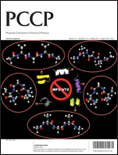
PHYSICAL CHEMISTRY CHEMICAL PHYSICS
Scope & Guideline
Exploring the Intersection of Chemistry and Physics with Impact
Introduction
Aims and Scopes
- Physical Chemistry:
Research exploring the fundamental principles of physical chemistry, including thermodynamics, kinetics, and quantum chemistry. - Chemical Physics:
Studies that investigate the physical properties and behaviors of chemical systems, often using advanced computational methods and experimental techniques. - Nanotechnology and Materials Science:
Papers discussing the synthesis, characterization, and application of nanomaterials, including their optical, electronic, and catalytic properties. - Spectroscopy and Analytical Techniques:
Research utilizing spectroscopic methods to investigate molecular structures, dynamics, and interactions at the atomic and molecular levels. - Electrochemistry:
Studies focused on electrochemical processes, including battery technology, fuel cells, and electrocatalysis. - Surface Chemistry:
Research involving chemical reactions and interactions that occur at surfaces and interfaces, including catalysis and adsorption phenomena. - Quantum Dynamics and Molecular Modeling:
Papers that employ quantum mechanical models to understand complex molecular systems and their dynamics.
Trending and Emerging
- Machine Learning and Artificial Intelligence in Chemistry:
An increasing number of studies are leveraging machine learning techniques for predicting molecular properties, optimizing reactions, and enhancing computational efficiency. - Sustainable Chemistry and Green Technologies:
Research focusing on environmentally friendly processes, including CO2 reduction, renewable energy materials, and sustainable synthesis methods is becoming more prominent. - Two-Dimensional Materials:
Significant interest in the properties and applications of two-dimensional materials, such as graphene and transition metal dichalcogenides, is evident in recent publications. - Electrocatalysis and Energy Storage:
Research into new electrocatalytic materials and battery technologies, particularly for lithium-ion and sodium-ion batteries, is trending strongly. - Biophysical Chemistry:
Studies at the interface of chemistry and biology, exploring molecular interactions in biological systems and their implications for drug design and development, are gaining attention. - Photoactive Materials and Photocatalysis:
There is a noticeable increase in research on materials designed for photocatalytic applications, particularly in energy conversion and environmental remediation.
Declining or Waning
- Traditional Coordination Chemistry:
Research focusing on classical coordination compounds has decreased as newer materials and methods gain prominence. - Basic Organic Chemistry:
Studies centered on fundamental organic reactions without a significant physical chemistry perspective are less prevalent compared to more integrated approaches. - Inorganic Solid-State Chemistry:
Research on conventional inorganic materials and their structures has waned, possibly overshadowed by advances in nanomaterials and hybrid systems.
Similar Journals
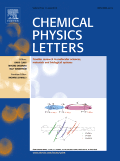
CHEMICAL PHYSICS LETTERS
Exploring the Intersection of Chemistry and PhysicsCHEMICAL PHYSICS LETTERS, published by Elsevier, is a prestigious journal that has been at the forefront of advancing knowledge in the fields of physical and theoretical chemistry and physics since its inception in 1967. With an impressive impact factor reflective of its high-quality research output, this journal holds Q2 quartile rankings in both the Physical and Theoretical Chemistry and Physics and Astronomy categories for 2023. It is recognized as a key platform for disseminating groundbreaking findings, with Scopus rankings placing it within the top 76th and 66th percentiles in its respective categories. Researchers and professionals benefit from its insightful contributions and rigorous peer-review process, making it an essential resource for those engaged in cutting-edge chemical physics studies. Although the journal is not open access, it remains accessible through various institutional subscriptions, ensuring that a wide audience can explore its wealth of knowledge. Located in Amsterdam, Netherlands, the journal continues to drive innovation and collaboration across diverse scientific disciplines.
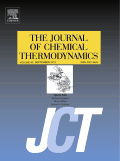
JOURNAL OF CHEMICAL THERMODYNAMICS
Exploring the Depths of Molecular InteractionsThe JOURNAL OF CHEMICAL THERMODYNAMICS serves as a pivotal platform for the dissemination of high-quality research in the field of thermodynamics and its applications across various scientific disciplines. Published by Academic Press Ltd - Elsevier Science Ltd, this esteemed journal, with an ISSN of 0021-9614 and E-ISSN 1096-3626, strives to contribute to the understanding of the thermodynamic properties of chemicals, materials, and molecular interactions. Covering a broad spectrum of topics from atomic and molecular physics to general materials science, it consistently ranks in the Q2 category across multiple fields including Physics and Astronomy, Chemistry, and Materials Science. With its convergence years extending from 1969 to 2025, the journal boasts a respected history and a commitment to fostering scholarly dialogue among researchers, professionals, and students alike. Though it is not an Open Access journal, its rigorous peer-review process ensures that published articles meet the highest standards of scientific excellence, making it an essential resource for anyone seeking to stay at the forefront of chemical thermodynamics research.
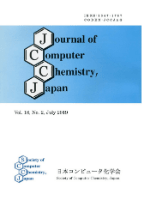
Journal of Computer Chemistry-Japan
Pioneering New Paths in Molecular Modeling and Drug DiscoveryJournal of Computer Chemistry-Japan, published by SOC COMPUTER CHEMISTRY, JAPAN, is a dedicated platform for researchers and professionals in the interdisciplinary fields of computational chemistry and chemical informatics. Though the journal does not currently provide open access, it maintains a rigorous selection process for contributions, ensuring the publication of high-quality, peer-reviewed research. With a focus on advancing computational methods and techniques to solve complex chemical problems, the journal aims to bridge the gap between theoretical chemistry and practical applications, making it an invaluable resource for academics and industry professionals alike. As the complexity of chemical systems continues to rise, the relevance of computational approaches in material science, drug discovery, and molecular modeling has never been more critical. Researchers are encouraged to engage with the contents of this journal, which showcases innovative studies, methodologies, and discussions relevant to the evolving landscape of computer-aided chemistry.
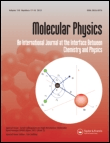
MOLECULAR PHYSICS
Driving discoveries in condensed matter and molecular biology.MOLECULAR PHYSICS, published by Taylor & Francis Ltd, is a distinguished international journal that has been advancing the fields of biophysics, condensed matter physics, molecular biology, and physical and theoretical chemistry since its inception in 1958. With an ISSN of 0026-8976 and an E-ISSN of 1362-3028, the journal provides a rich platform for the dissemination of high-quality research, evidenced by its Q3 ranking in several domains including both biophysics and condensed matter physics as of 2023. Although the journal operates on a traditional subscription model rather than an Open Access basis, its rigorous selection process ensures the publication of relevant and impactful articles. The journal's continued convergence of research until 2024 underlines its ongoing significance and adaptability in an ever-evolving scientific landscape. For researchers, professionals, and students alike, MOLECULAR PHYSICS serves as an essential resource for keeping abreast of the latest developments, fostering collaboration, and inspiring future advancements in molecular theory and applications.
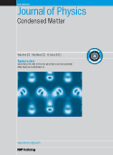
JOURNAL OF PHYSICS-CONDENSED MATTER
Innovating Research for a Solid-State Future.JOURNAL OF PHYSICS-CONDENSED MATTER, published by IOP Publishing Ltd, stands as a premier platform for the dissemination of impactful research in the fields of condensed matter physics and materials science. Since its inception in 1989, this journal has successfully bridged the gap between fundamental and applied research, delivering cutting-edge findings pertinent to both the academic community and industry professionals. Ranking in the Q2 category for both Condensed Matter Physics and Materials Science, it holds a respectable position within the scientific community, as evidenced by its Scopus rankings. With a commitment to fostering innovative research and promoting open dialogue, the journal offers a substantial collection of articles that contribute to the evolving landscape of materials science and physics. Researchers and students are encouraged to engage with the journal’s rich content, which not only enhances their academic pursuits but also plays a crucial role in advancing technologies based on solid-state materials.

Russian Journal of Physical Chemistry B
Propelling knowledge in the realm of physical chemistry.Russian Journal of Physical Chemistry B, published by MAIK NAUKA/INTERPERIODICA/SPRINGER, serves as a vital platform for the dissemination of novel research in the field of physical and theoretical chemistry. With an ISSN of 1990-7931 and an E-ISSN of 1990-7923, this journal has established itself in the academic landscape since its inception in 2008, continuing to publish groundbreaking studies that push the boundaries of chemical research through 2024. Ranked in the Q3 category in Physical and Theoretical Chemistry, it holds a Scopus Rank of 139/189, showcasing its significance despite a competitive field. The journal does not currently offer open access but remains dedicated to advancing knowledge and innovation within its niche, fostering collaboration among chemists, researchers, and educators. As a valuable resource for those seeking to stay abreast of the latest developments and theoretical advancements, the Russian Journal of Physical Chemistry B is an excellent choice for professionals and students alike.
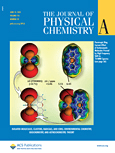
JOURNAL OF PHYSICAL CHEMISTRY A
Advancing the frontiers of molecular understanding.Journal of Physical Chemistry A, published by the American Chemical Society, serves as a leading platform for disseminating high-quality research in the fields of physical and theoretical chemistry. With an ISSN of 1089-5639 and E-ISSN of 1520-5215, this journal maintains a rigorous standard, demonstrated by its position in the Q2 category for both physical and theoretical chemistry as well as miscellaneous medicine within its 2023 category quartiles. As part of the greater ACS network, it operates with a solid Scopus rank of 76/189, placing it within the 60th percentile, emphasizing its credibility and impact in the chemistry community. The journal's objective is to enhance the understanding of molecular phenomena through innovative experimental and computational approaches, making it essential reading for researchers, professionals, and students seeking to advance their knowledge and contribute to scientific discussion. With additional open access options, the Journal of Physical Chemistry A continues to foster collaboration and the sharing of ideas in the vibrant scientific landscape of the United States and beyond.

JOURNAL OF MATHEMATICAL CHEMISTRY
Illuminating the Path of Theoretical and Computational ChemistryJOURNAL OF MATHEMATICAL CHEMISTRY is a prominent peer-reviewed journal published by Springer, dedicated to the field of mathematical chemistry. With an established history dating back to 1987, this journal serves as a vital platform for researchers to disseminate innovative findings and methodologies that combine the principles of mathematics with chemical science. Currently, it holds a commendable impact factor and ranks in the Q2 category for both applied mathematics and miscellaneous chemistry in 2023, showcasing its influence within these disciplines. The journal is indexed under Scopus, with notable rankings that place it in the top quartile among related works, ensuring high visibility and academic rigor. While access to its content is not open, the journal maintains a dedicated readership of professionals, researchers, and students eager to explore the computational and theoretical aspects of chemistry. The JOURNAL OF MATHEMATICAL CHEMISTRY continues to enrich the scientific community by fostering interdisciplinary collaboration and advancing quantitative approaches in chemical research.
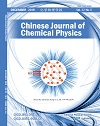
CHINESE JOURNAL OF CHEMICAL PHYSICS
Innovating Methodologies in Chemical PhysicsChinese Journal of Chemical Physics, published by the Chinese Physical Society, serves as a pivotal platform for advancing the field of chemical physics, encompassing groundbreaking research and innovative methodologies since its inception in 2000. With an ISSN of 1674-0068 and E-ISSN of 2327-2244, the journal has established itself within the academic community, reflected in its 2023 classification as Q3 in Physical and Theoretical Chemistry and a Scopus rank of #142 out of 189, representing the 25th percentile in this competitive field. Although it does not currently operate as an open-access publication, its commitment to disseminating pivotal scientific research continues to attract scholars and professionals alike. The journal aims to bridge the gap between theoretical principles and practical applications in chemical physics, thereby fostering collaboration and innovation. By contributing significantly to the discourse in this dynamic domain, the Chinese Journal of Chemical Physics remains an essential resource for researchers, professionals, and students eager to stay abreast of contemporary developments.

INTERNATIONAL REVIEWS IN PHYSICAL CHEMISTRY
Exploring Innovative Insights in Theoretical ChemistryInternational Reviews in Physical Chemistry, published by Taylor & Francis Ltd, is a leading journal dedicated to the advancement of knowledge in the field of physical and theoretical chemistry. With an impressive Scopus Rank of 13 out of 189 in its category and a Q2 quartile ranking in 2023, this journal provides a vital platform for researchers, professionals, and students to disseminate and engage with groundbreaking research findings. Since its inception, covering a converged period from 1981 to 2023, the journal has consistently offered comprehensive reviews and original research articles that address crucial advances and contemporary debates in physical chemistry. While not an open-access journal, it maintains accessibility through its robust publication standards and esteemed editorial board. Given its impact and relevance, International Reviews in Physical Chemistry is indispensable for anyone involved in the chemical sciences, facilitating a deeper understanding of complex physical principles and their applications.